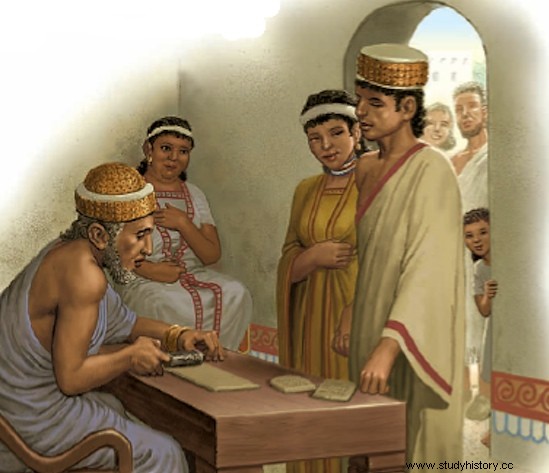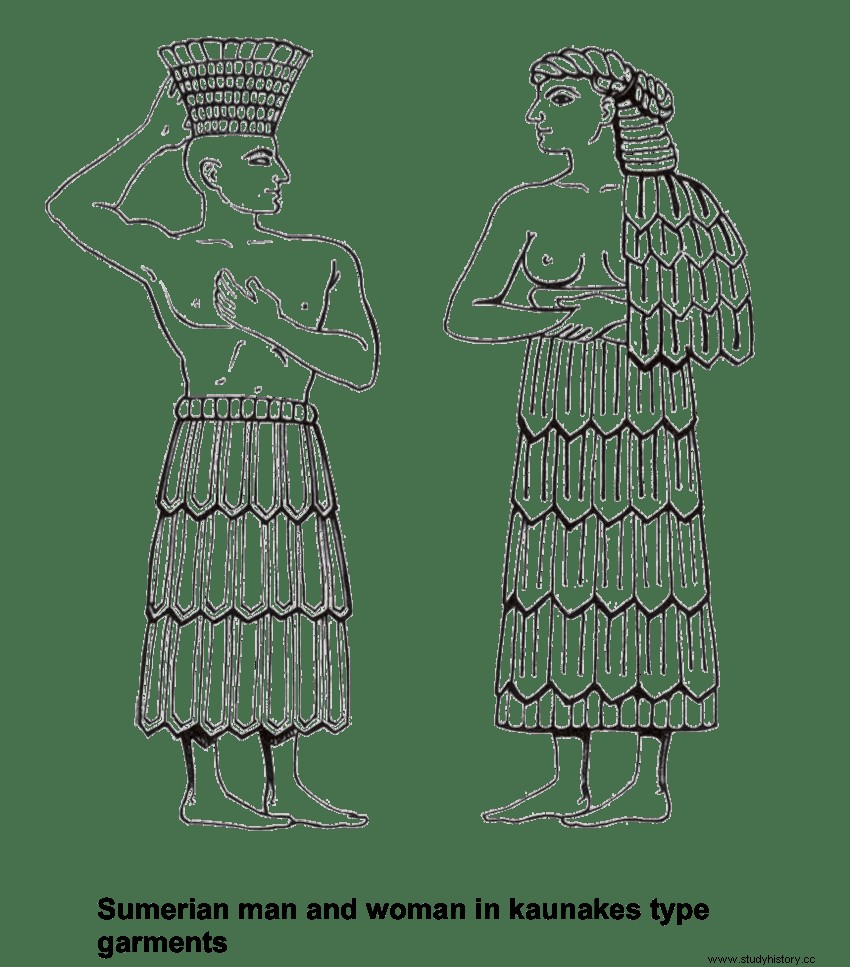Before getting into the pink gossip of the Sumerians, it should be noted that the marriage between the two rivers had no religious connotations. It is true that the act was presided over by a priest, but that was done to collect the corresponding tax (all religions pass the brush, right?) and to attest to the marriage contract. And it is that the Sumerian priestly class had the power to attest, in the name of the gods, of all kinds of agreements. The marriage of the black heads was a mere civil contract by which the ruler and the temple were informed of the formation of a new “unit of production”. And it is that the Sumerians considered families as a kind of family business with common interests. That influenced weddings, because if the father was a baker he saw a grain merchant son-in-law with better eyes than a fisherman.

And for the article to have the right amount of pink, I note that love marriages took place, which is curious considering that the weddings were arranged. There were stories worthy of appearing in gossip magazines, such as the one about Sargón de Akhad , who married the king's widow Lugalzagesi -he himself made her a widow, by the way- and to whom it seems that he was faithful at a time when concubines were fashionable. Or the story of his great-grandson Sharkalisarri , who also had no concubines, and whose wife changed her birth name to Tutasharlibish (in Sumerian, “She found love from her heart ”). The marriages were arranged by the mothers, with which the Sumerians could properly assure that your mother always wants to marry you. If the parent had died, it was one of the sisters who was in charge of the task. In the culture of the two rivers, they were seen as confidants of her brothers, so she assumed that she was qualified to find a suitable girl and not cause an upset. When the mother or sister had discussed the conditions of the marriage contract, the bride went to live with her future in-laws and her husband for a few months. In that time of trial, sexual coexistence was taken for granted, because for the Sumerians sex and children were very important, and a marriage with bad sex was synonymous with few children. They practiced without problem, therefore, premarital relations . If the thing did not come to fruition, the marriage contract could be broken and the young man was free to continue giving his sister the grill asking for a date with the stunning friend that all sisters have.
In the wedding ceremony, apart from the binge, in which poems in honor of the couple, beer, sausages and fish pies, there were two very important parts:one of them consisted of paying the corresponding taxes to the temple, the scribe and the collector; and another, in which the groom, before the witnesses, placed on the hem of the kaunake of the girl - ritual type skirt made of skin - a tablet. That tablet specified the dowry provided by her father-in-law, and that dowry was the exclusive property of the girl.

We know that in archaic times in Sumeria both polygamy and polyandry were practiced, since both were abolished by Urukagina of Lagash . Polygamy returned over time, although only for those who could finance it. If a woman did not want or could not have more children, she could give her husband one or more concubines, whose children would have all the rights of her half-siblings. What if a couple couldn't stand each other anymore? The husband could ask the woman for a divorce and she could not refuse to give it, in the same way that she could not oppose having sex with her husband. The wife could also request a divorce, although the husband could refuse to grant it. In the separation ceremony, the corresponding taxes were paid to the temple, the collector, the scribe, and also the town crier, so that he could proclaim the dissolution of the marriage in a public square. Then, before witnesses, the newly divorced cut the hem of the kaunake of his ex. Why? Well, because when he divorced the man he lost her dowry, and with that symbolic act he made it clear that he renounced it. The woman left with her entire dowry, and with everything that she had earned in case her dowry had been invested in a business or trade. With this we see that the husband had rights over the wife, but in case of divorce the wife was not economically helpless.
I have always said that blackheads were pragmatic people. Aren't the best endings the ones where everyone is happy?
Contributed by Joshua BedwyR author of In a Dark Blue World
Image:Sumerian family structure
